The Insect World: Tarantula Hawk
80% of living creatures on earth are insects, today, science knows about 900.000 species of these unusual creatures. They are so differ in their appearance, biological structure, ways of development and reproduction of mammals, fish, reptiles and birds, that sometimes it seems to me that these guys are not from our planet and got here by accident, and then successfully adapted and multiplied.
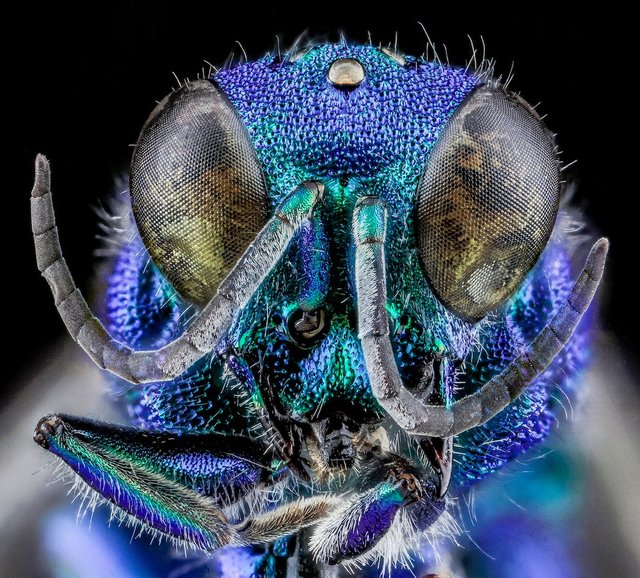
image source
Not to say that I suffer from some phobias against insects, but some of their "talents" scare me. I hope that the fantastic stories in which insects grow in size in the 1000-100, or only 10 times, will remain on the pages of books and in the imaginations of science fiction. Because I'm sure if insects will be giant, we immediately get their attention as the easy and tasty prey, who knows... Here is 1 of the 900,000 reasons why they had better stay small:
Tarantula Hawk or Pepsis.
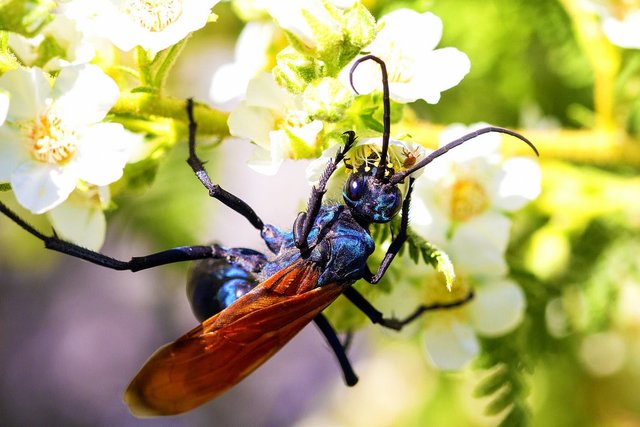
image source
As you see it's not a hawk, and a wasp, I'd like to say ordinary, but it's not so. Such wasps can be found everywhere from the USA to Patagonia, and even in the Andes, at altitudes up to 3,400 m.
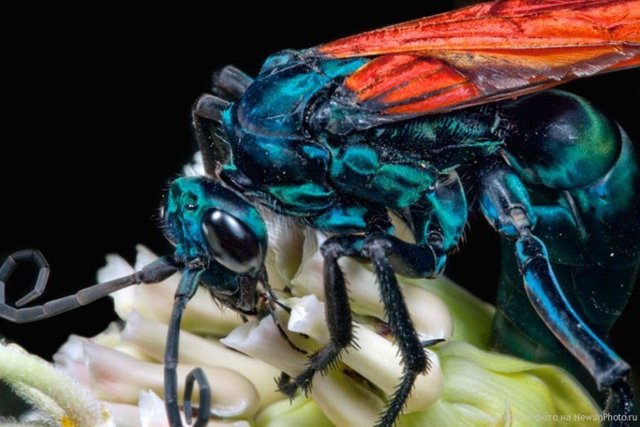
image source
Their coloring depends on the region of habitat, and is as diverse as tropical butterflies. Pepsis feed on nectar of flowers and juice of rotten fruit. On this they similarity with butterflies ends…
The size of the adult individuals can reach 5 cm, and the length of the stinger to 7mm, 4 paws equipped with special hooks that allow them to grip prey, powerful jaws can bite the stem thickness of 0.5 cm. But, if it feeds on nectar, then what kind of prey is it?
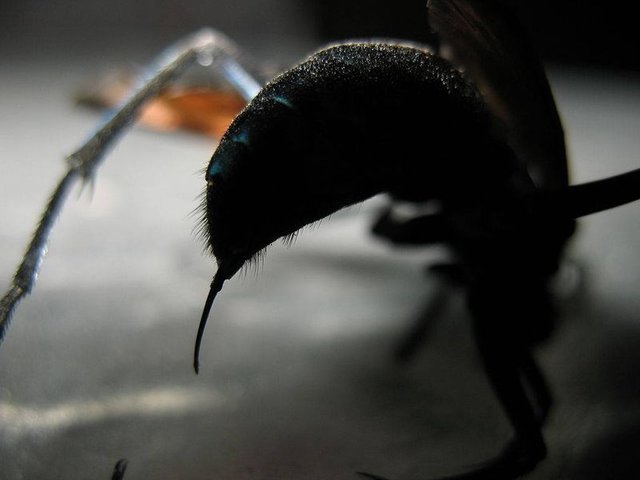
image source
During reproduction, after fertilization, the female hawk immediately goes in search of incubator for her «baby». As the Incubator fits only one creature - a tarantula (the largest species of spiders). The wasp finds spider by smell, then begins the fierce battle.
Tarantula is much stronger than wasp: he is armed with two venomous mandibles and eight prehensile feet, and usually 2-3 times larger than wasp. But in 80% of cases the pepsis wins.
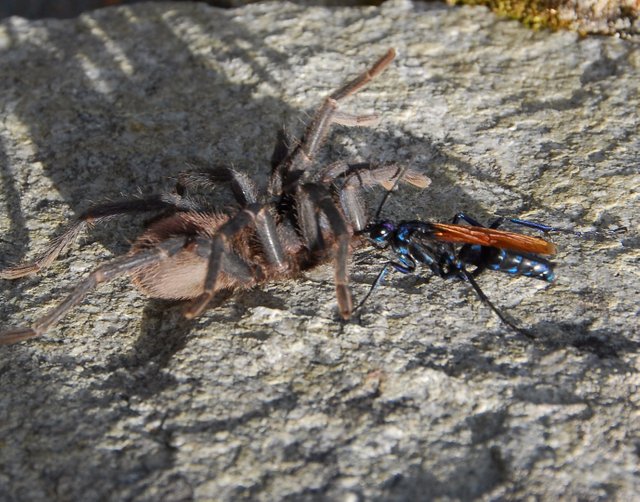
image source
There is an assumption that she secretes special pheromones, that prevent the spider to navigate, she also disorients him with vibration of her body. In addition, the carapace of the wasp is quite strong, often mandible spider just slip off it. Another advantage is the speed, in which the spider loses much.
During the battle the wasp to aim her stinger into the abdomen of the spider (in his nerve center). After sting hit the target , spider is completely paralyzed in a few seconds. From this moment for the spider begins the last and worst month of his life. The wasp drags the paralyzed spider in his own burrow, or in a prepared lair and lays a single larva on the spider's abdomen, and fly away, securely close the hole.
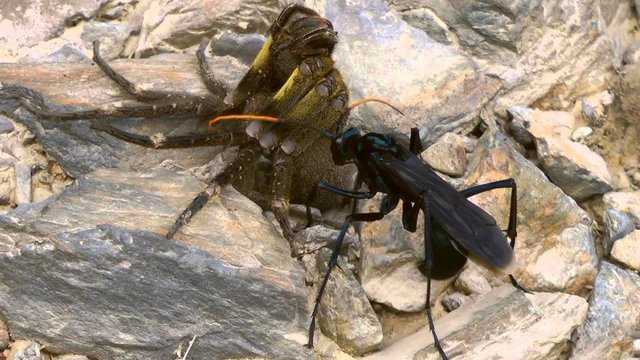
image source
In the next 30 days the larva begins to actively and very carefully eat the spider, which remains alive and can fell everything, but can't move. It starts with muscles and tendons, then tearing the abdomen of the victim, sticks his head inside and greedily devours the spider. She leaves the vital organs for last, to tarantula stay fresh until the end.

image source
At the final stage the larva eats the heart and nervous system of the spider. The terrible death to create, known as a formidable hunter. The larger was the spider, the larger will grow the wasp (larva). After the last stage of pupation of the hole the light goes out completely adult hawk.
These wasps are not dangerous for people, almost. They do not lay eggs in us, and can bite only in case of protection, but if it happens, it will be a hell of a pain. The bite of this beautiful and menacing wasp is considered one of the most painful and is in second place in the Schmidt Sting Pain Index.
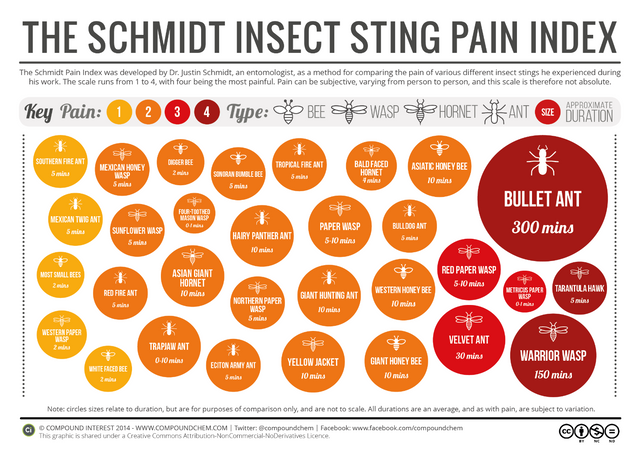
image source
According to the description of one of the researchers, all he could do after being bitten for the first three minutes is to scream loudly. Pain disables almost all mental functions.
By the way, in Bolivia these wasps are called "amigo del hombre" (man's best friend), probably because they have many problems with tarantulas...
No one is hunting pepsis, except one guy: Greater Roadrunner. The name speaks for itself, this bird runs at a speed of 42 km/h, and noticing the wasp grabs her with the beak, hits the ground and immediately swallows.
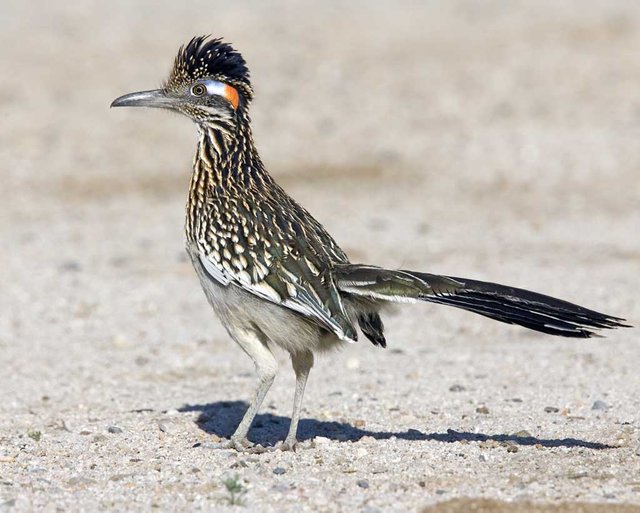
image source
Nature is the great equalizer, for every killer there is another killer.
sources: Tarantula Hawk, Schmidt sting pain index, Killer of the spiders, Pepsis,The story of the tarantula and the tarantula-hawk-wasp images from Google search.
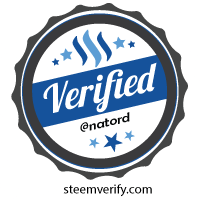
Wow, that is one seriously nasty wasp! I hope I never run into one of those things. I bet there are a lot of interesting insects I never knew existed, thanks for sharing.
After this one, I learned that there are many other types of wasps that lay their larvae in the spiders and other insects (for example into the bees). But pepsis is really awesome.
Yeah, I never imagined wasps could be so dangerous. Taking down a tarantula, that's really something.